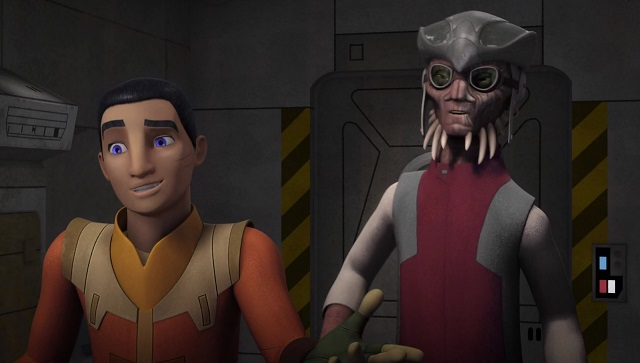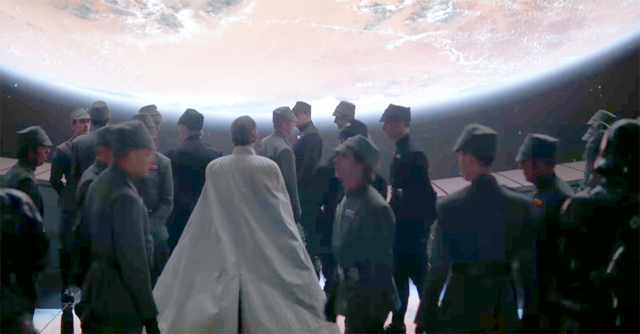
Mike: While it was as entertaining as Hondo episodes always are, the thing I found sort of perplexing about this week’s installment of Star Wars Rebels was that I’m not certain what they want us to think of Hondo at this point. He stands firmly apart from the assortment of quasi-recruits we discussed last week in that he has no direct interest in the Rebel cause and only works with them when he can get something out of it, but it seemed like the larger point of this episode was to suggest to viewers that Ezra is fundamentally mistaken in trusting him, and continuing their chaotic friendship is going to lead our heroes to a bad place.
But would that amount to sowing doubt for its own sake, or are Hondo and Ezra headed for a real split soon? It’s more likely, I think, that they’d want us to think they are in advance of a genuine hero moment for Hondo. For all the noise the characters make about him only being out for himself, the creators have always had so much obvious affection for the character (going back to his adventures with Obi-Wan and Anakin in The Clone Wars) that I have a hard time seeing him ever truly betray Ezra and the gang in a serious way—as Ezra notes, he may be sketchy but teaming up with him has always worked out in the end. Are they really signaling a change in that dynamic? According to Taylor Gray in Rebels Recon, Ezra feels genuine affection for Hondo because he reminds him of the carefree scoundrel he was as a child–so what did he take away from this week’s events that he didn’t know already?
Ben: Well, right now it seems to be a question of driving a wedge between him and Hera. Hera’s buckled down on the shenanigans as things have gotten more intense and serious, especially with Kanan being blinded and taking a backseat, and having Hondo (and Azmorigan) around is putting an agent of chaos into the mixture. I feel there was a bit of meta-commentary when Ezra mentioned that every time they team up with Hondo, things seem to work themselves out in the end. Even in this episode, they rescued the Ugnaught and got away with a hold full of proton bombs. Yes, it does work out, we know from a narrative standpoint that it will because Hondo is who he is from an out-of-universe perspective. But Hera doesn’t have our perspective, and neither does Zeb. Read More

![Star-Wars-Propaganda-Poster-Set_Page_06[1]](http://eleven-thirtyeight.com/wp-content/uploads/2016/10/Star-Wars-Propaganda-Poster-Set_Page_061-337x450.jpg) Today we conclude our week of Star Wars Propaganda coverage with the second part of our interview with author Pablo Hidalgo. This piece is a continuation of
Today we conclude our week of Star Wars Propaganda coverage with the second part of our interview with author Pablo Hidalgo. This piece is a continuation of ![Star-Wars-Propaganda-Poster-Set_Page_05[1]](http://eleven-thirtyeight.com/wp-content/uploads/2016/10/Star-Wars-Propaganda-Poster-Set_Page_051-338x450.jpg) On Wednesday, I
On Wednesday, I ![Star_Wars_Propaganda_New_Cover[1]](http://eleven-thirtyeight.com/wp-content/uploads/2016/10/Star_Wars_Propaganda_New_Cover1-337x450.jpg) (Programming note: this piece is the first of three about Star Wars Propaganda. On Friday and next Monday, I’ll be posting a two-part interview with the author, Pablo Hidalgo.)
(Programming note: this piece is the first of three about Star Wars Propaganda. On Friday and next Monday, I’ll be posting a two-part interview with the author, Pablo Hidalgo.)